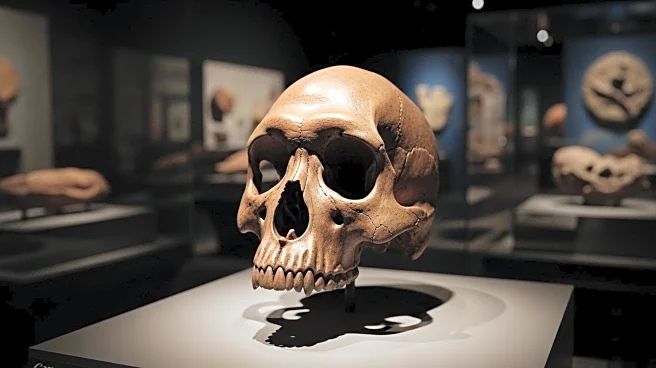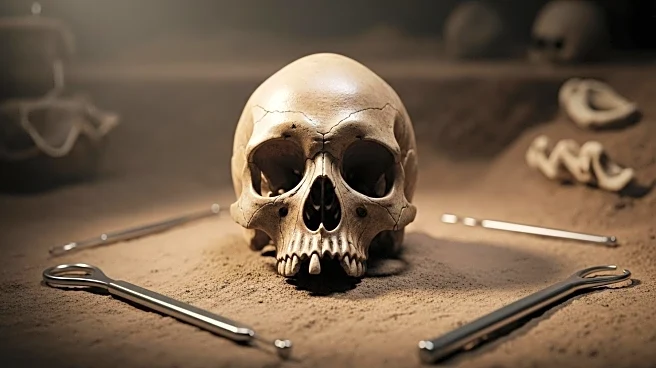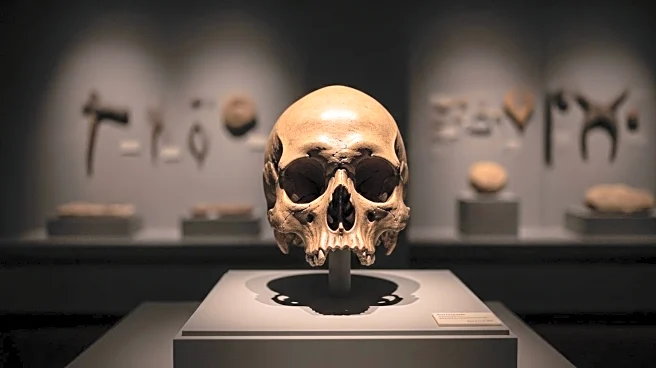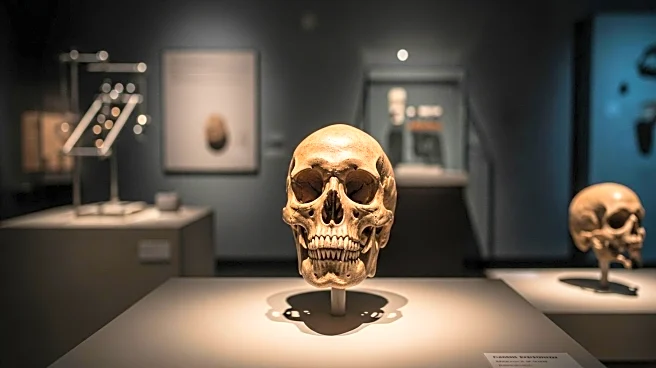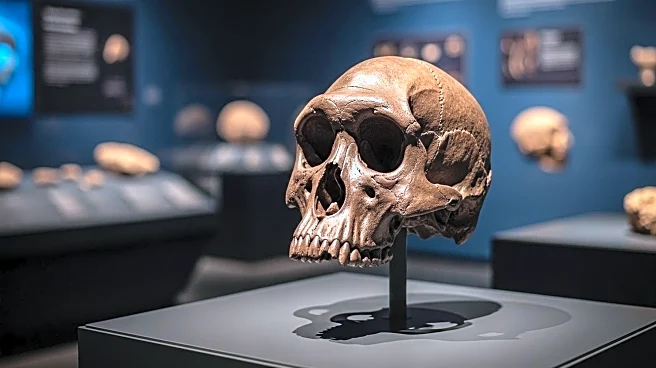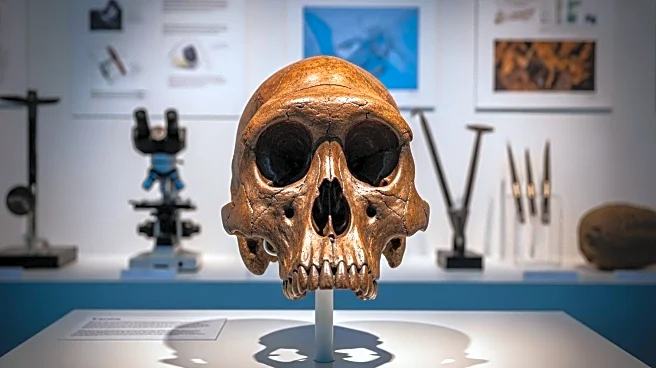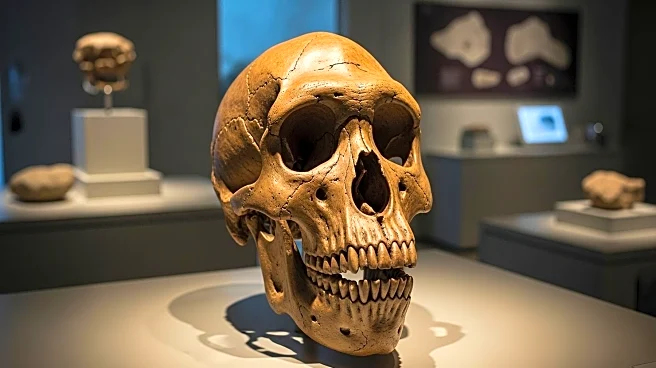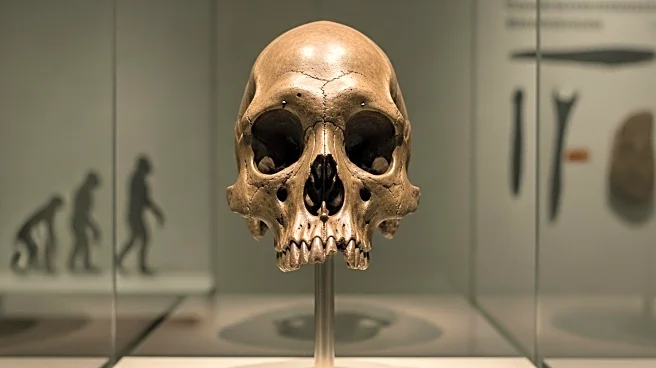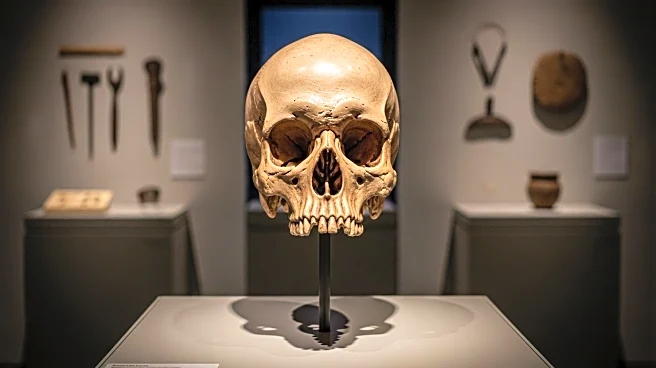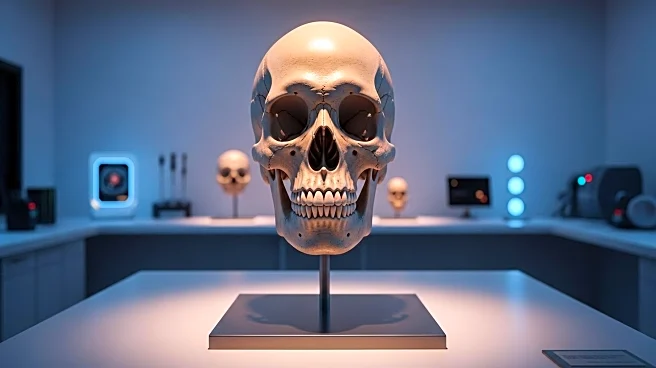What's Happening?
A deformed human skull, named Yunxian 2, discovered in central China over thirty years ago, is challenging existing theories about human evolution. Initially thought to be an early human ancestor like Homo erectus, recent digital reconstruction has revealed a mix of traits that do not fit neatly into a single species. The skull, dated between 940,000 and 1.1 million years old, showcases features that suggest it may belong to a separate lineage, potentially linked to the Denisovans. This discovery could indicate that modern humans, Neanderthals, and Denisovans coexisted for up to 800,000 years, offering new insights into human migration and interbreeding.
Why It's Important?
The findings from the Yunxian 2 skull could significantly alter the understanding of human evolution, suggesting that the split between modern humans and other hominins occurred much earlier than previously believed. This revelation impacts the scientific community's perception of human ancestry, highlighting the complexity and interconnectivity of different human species. It also underscores the role of Asia as a significant stage in human evolution, challenging the traditional focus on Africa and Europe. The study emphasizes the importance of technological advancements in uncovering hidden aspects of ancient fossils, potentially leading to more discoveries that could further reshape the evolutionary timeline.
What's Next?
The research team plans to continue analyzing the Yunxian 2 skull and other related fossils to refine their understanding of the longi clade and its relationship to modern humans. Further studies may focus on genetic evidence to corroborate the findings and explore the implications for human migration patterns. The scientific community is expected to engage in discussions and debates regarding the classification of the Yunxian 2 skull and its impact on existing evolutionary models. As technology advances, more discoveries are anticipated, potentially leading to a reevaluation of human evolutionary history.
Beyond the Headlines
The discovery of the Yunxian 2 skull highlights the ethical considerations in scientific research, particularly in the interpretation and presentation of findings that challenge established theories. It also raises questions about the cultural and historical significance of human evolution, encouraging a broader exploration of the interconnectedness of different human species. The study exemplifies the dynamic nature of scientific inquiry, where new evidence can prompt a reevaluation of long-held beliefs and foster a deeper understanding of humanity's origins.

